The lunge — arguably one of the best leg exercises you can do in the gym — builds leg muscle, strength, and coordination. Few movements are as adaptable and easy to program or perform. There are many different ways to perform the lunge, but the most popular variation (the forward lunge) involves stepping with one leg, then driving back upwards to return to the starting position. It’s basic, easy to execute, and very effective. This article will take you through the lunge, step by step.
How To Do Lunges
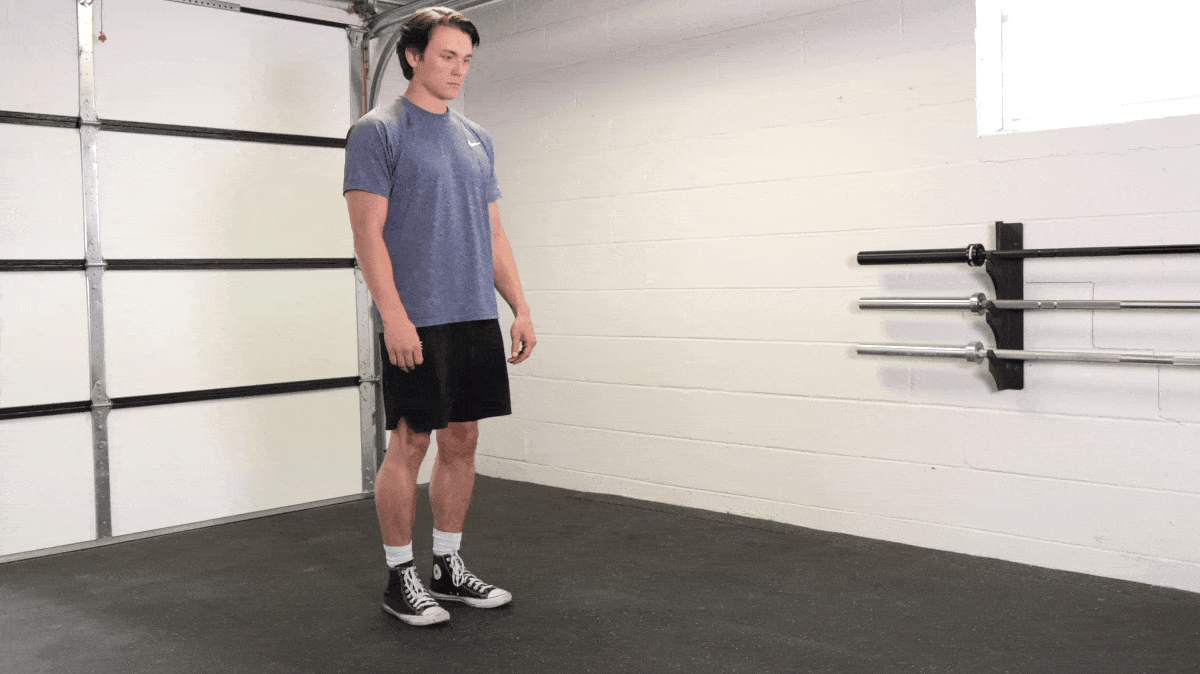
- Focus and Step: Lock eyes on a point in front of you a few feet away, then step your working leg forward toward that point and plant it roughly 2 feet ahead of you.
- Drive and Sink: Once your foot is firmly planted on the ground, drive your front knee forward and sink into the lunge while your back foot comes up onto the toes.
- Push Up and Back: Reverse the motion by pushing hard into the floor with your front leg to return to the starting position.
Coach’s Tip: Do not push off your back foot during the exercise’s concentric (raising) portion. Remember, this exercise aims to place the load around the hip and knee on the front leg.
Lunge Variations
There are many, many different lunge variations out there. Holding a kettlebell instead of a dumbbell can change how the exercise affects you, as well as stepping onto or down from an elevated surface. Start with these two basic lunge variations and experiment from there:
Walking Lunge
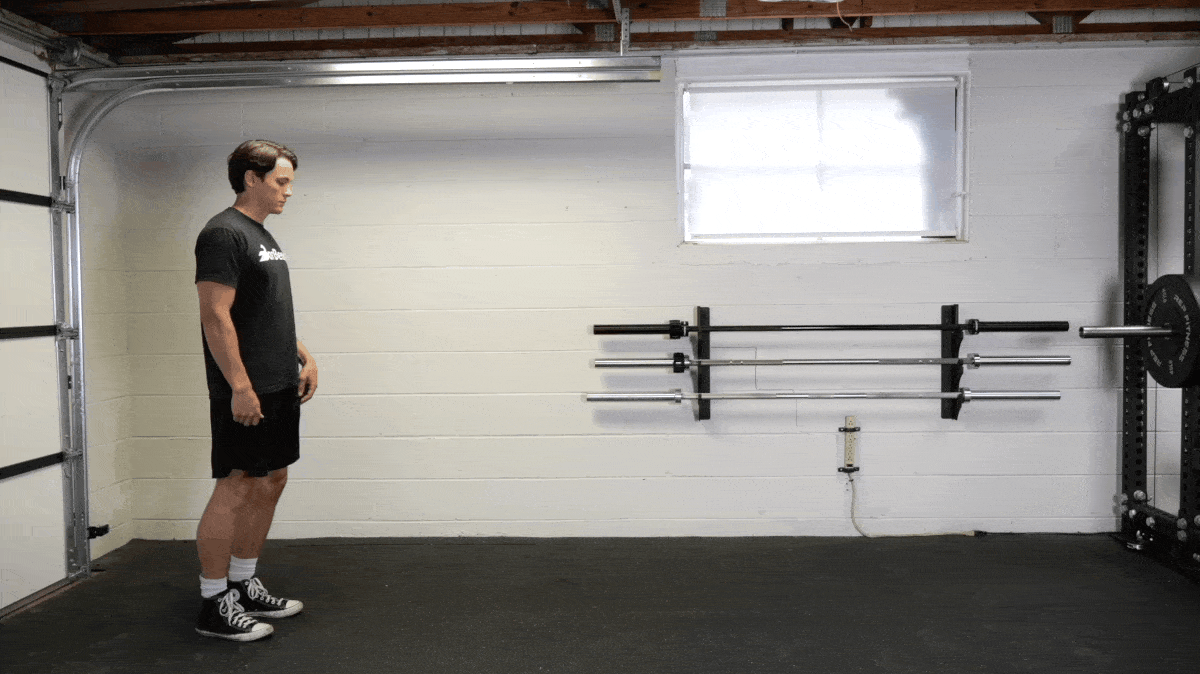
[Read More: Walking Lunges vs Lunges]
- Step forward about two feet with your working leg, then sink into the lunge allowing your knee to travel forward freely.
- At the bottom of your step, push off with your back leg to carry you forward and then step out with that leg.
- Repeat the motion, alternating which leg is working as you step.
Walking lunges add more dynamic movement into the mix. You can use them to increase calorie burn or as part of a warm-up before a leg workout.
Lateral Lunge
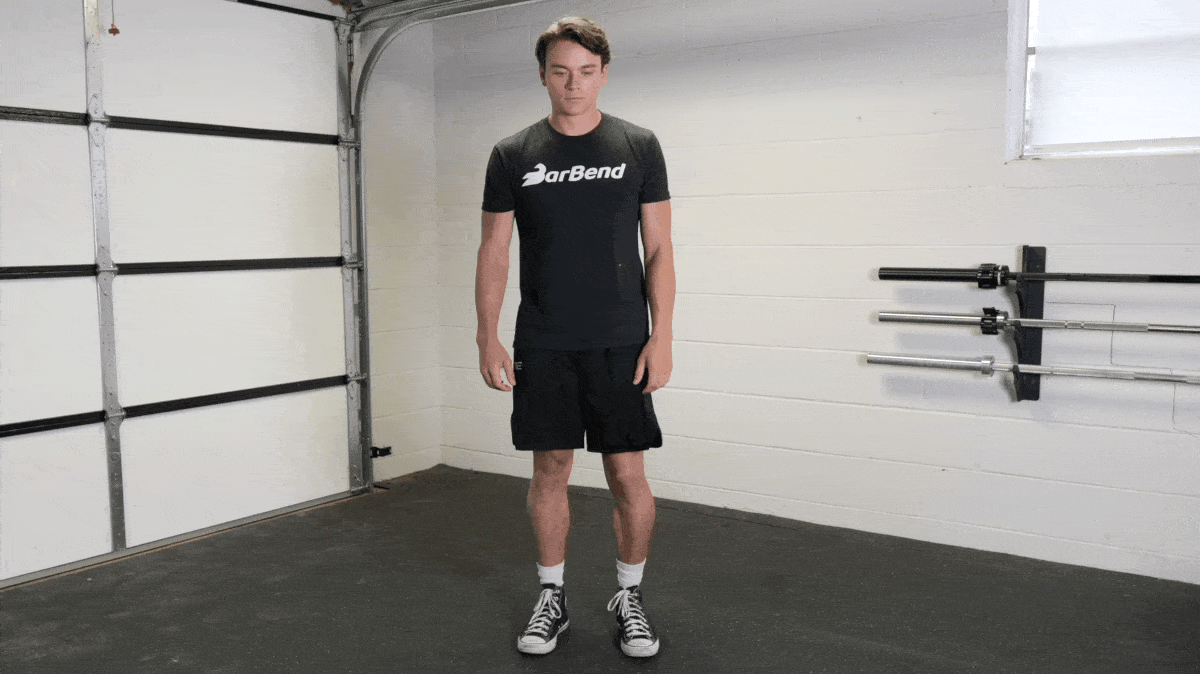
[Read More: Lunge Variation Benefits]
- Stand upright with your feet under your hips. You can hold your hands aloft in front of your body to help you balance if you need.
- Step out to the side with one leg and then sink into that hip by pushing your butt backward and leaning your torso forward.
- Push off the ground with that leg, returning to a standing position.
Lateral lunges help you train your body to perform in a different plane of motion. They’re also great for overall hip stability and strengthening your adductors as well.
Lunge Alternatives
They are a lot of ways to alter, progress, and regress the lunge. Here are a few lunge alternatives you can mix into your workout program if you want similar benefits:
Reverse Lunge
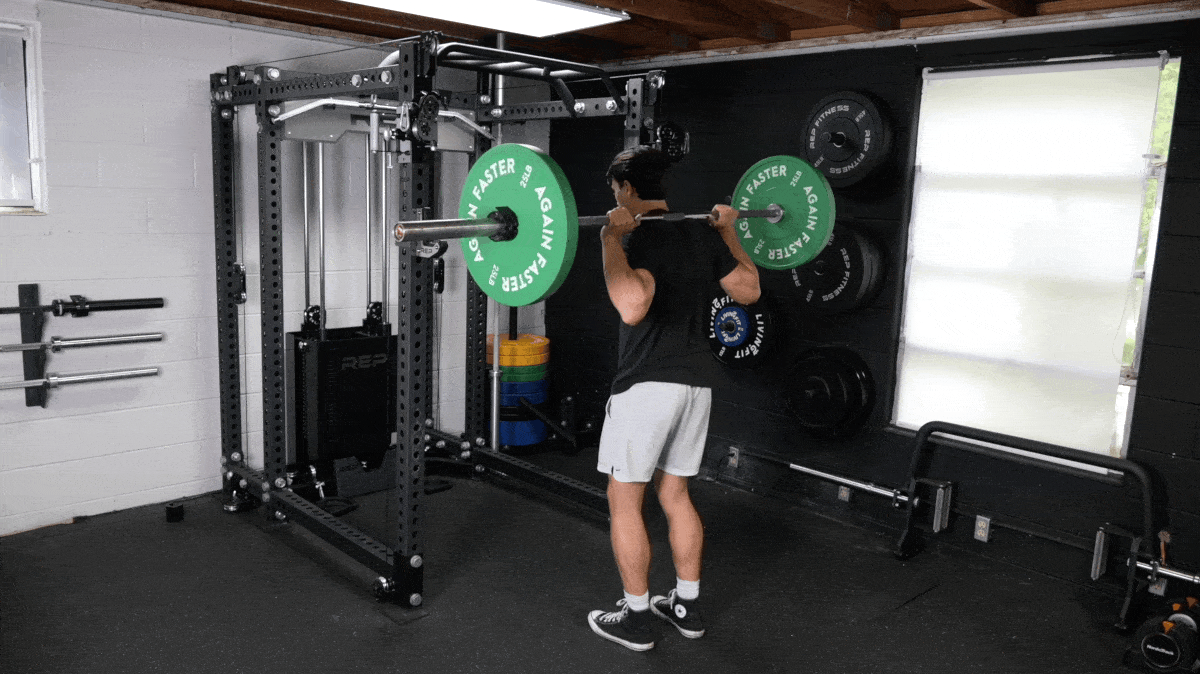
[Read More: Reverse Lunge vs Split Squat – Differences and Muscles Worked]
- Stand upright with your feet under your hips while holding a barbell on your back as you would for a back squat.
- Inhale, brace your core, and then step back with one leg, landing on the balls of your foot.
- From here, push off from your front leg to return to a standing position.
The reverse lunge is the same movement pattern as a standard lunge, just, well, backwards. This exercise is generally easier to perform and most people find it more intuitive to work with.
Bulgarian Split Squat
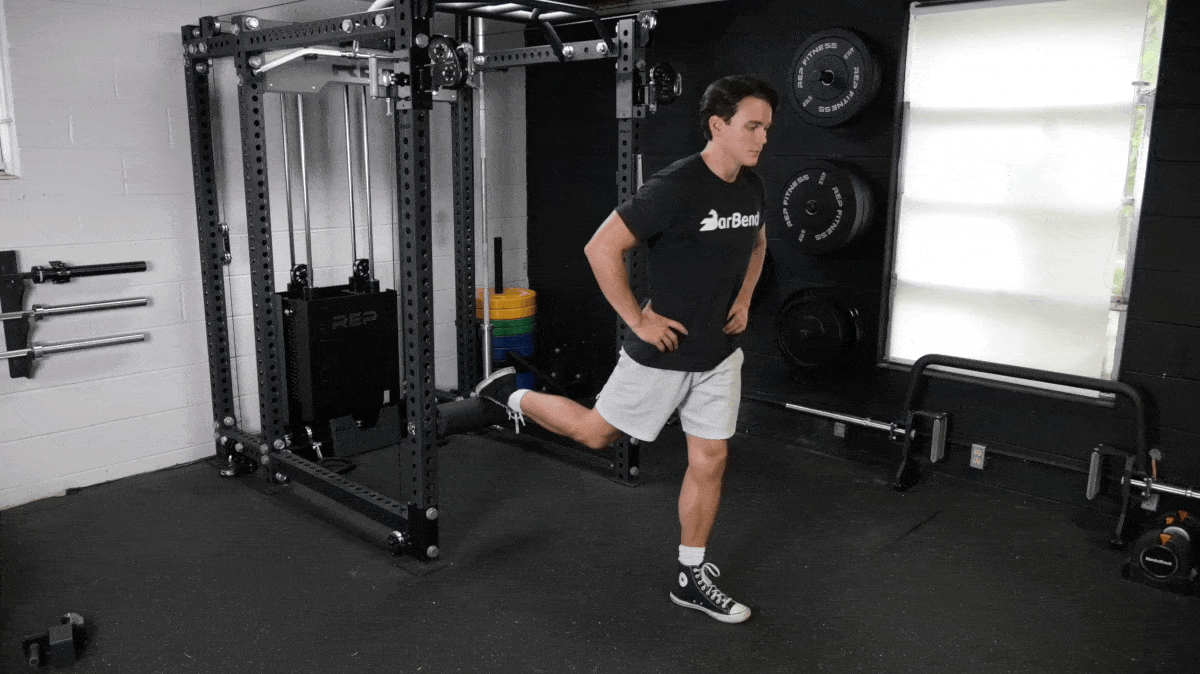
[Read More: The Differences Between the Lunge Vs. Split Squat Explained]
- Place your non-working leg onto a stable, roughly knee-height surface like a weight bench or low plyo box.
- Hop forward with your working leg until you feel a very small stretch in your non-working hip.
- From here, lean forward slightly, place your hands on your hips (or hold them out to your sides for balance), and brace your core.
- Sink down into a low squat position, allowing your front knee to travel forward freely.
- Push back up to the start position with your front leg.
Bulgarian split squats are a fantastic substitute for the lunge if you want to prioritize muscle growth or increasing your strength rather than balance and stability. You can perform this movement while holding heavy dumbbells, or with a barbell on your back to make it more challenging.
Front-Foot-Elevated Split Squat
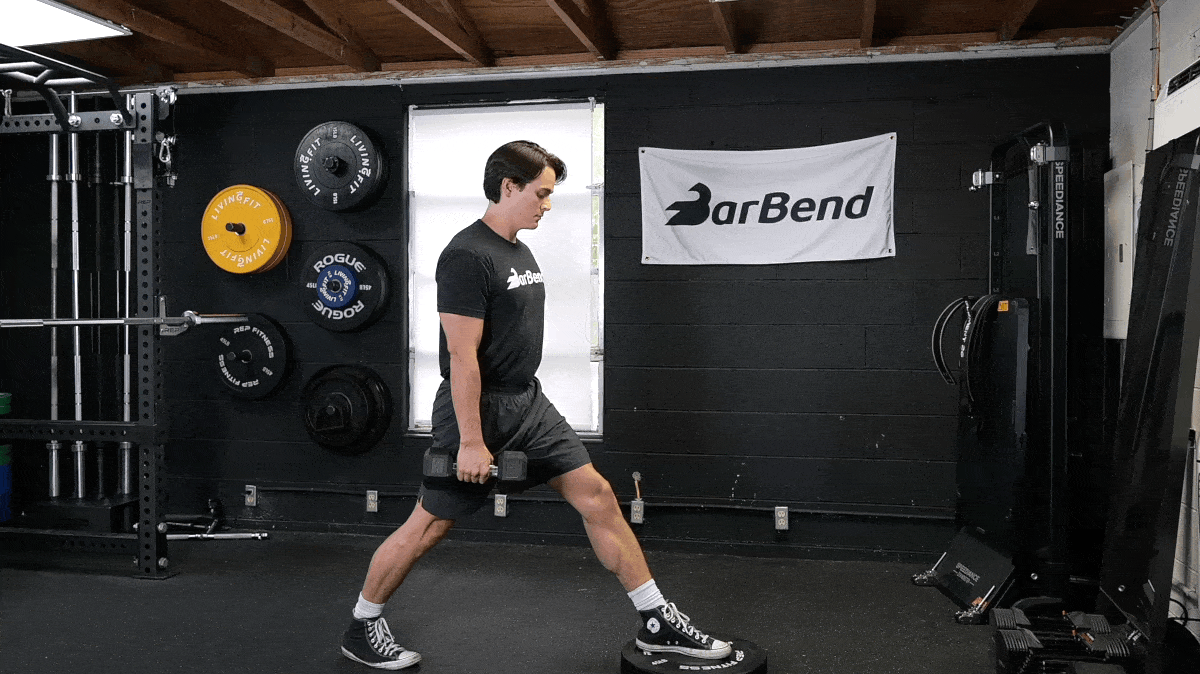
[Read More: How to Do Dumbbell Lunges for Bigger Legs and Stronger Squats]
- Choose a small elevated surface to work with such as a bumper plate or riser.
- Stand a few feet away from the platform.
- Step forward onto the platform with your working leg, sinking deep into a lunge position.
- Pause for a moment at the bottom, then push off from the platform with your working leg and return to the starting position.
By elevating your front foot, you provide more range of motion for your hips, since your back knee won’t touch the ground as quickly. This makes the front-foot-elevated split squat a great option for improving your hip mobility or as a dynamic warm-up for exercises like the squat.
Video Guide
Looking for more info on the lunge? Check out this in-depth video featuring BarBend‘s former Training Editor, Jake Boly, CSCS.
Who Should Do Lunges
The lunge is reliable, but it’s not for everyone. Before you plug it into your workout program, you need to make sure the movement is right for you.
Bodybuilders
The lunge is a popular bodybuilding exercise because it targets each leg individually and places a lot of tension on the quads and glutes. Bodybuilders need to ensure their training aligns perfectly with their personal proportions.
Luckily, you can adjust your lunge technique (or the implement you use) to make sure it’s working towards muscle growth.
Strength and Power Athletes
Improving the strength and size of the glutes, quads, and adductors is a major key to success for powerlifters, Olympic lifters, and strongmen alike. These sports require movements like the back squat, deadlifts, clean & jerk, and many other movements that require significant amounts of leg strength.
Functional Fitness Fans
CrossFit athletes and those training for sport can use the lunge within their programming to help increase lower body strength and muscle mass, especially in their quads, glutes, and adductors.
Strong legs will be necessary for maximizing performance in lower body pressing variations (deadlifts, walking lunge, overhead squats, and Olympic variations) and bodyweight variations (box jumps, wall balls, and burpees).
Lunge Sets and Reps
Since the lunge is a unilateral movement, it’s quite easy for your rep count to get out of hand quickly. However, that doesn’t mean that the lunge isn’t useful in multiple unique ways. Like any good exercise, it’s only worth how you program it. Here are three different ways to plan out your lunge training.
- For Muscle Growth: 3-4 sets of 10-12 reps with heavy dumbbells.
- To Gain Strength: 2-3 sets of 6-8 reps with heavy weights and a slow eccentric.
- As a Beginner: 2 sets of 12-15 reps on each leg with just your body weight.
Benefits of Lunges
The lunge offers an array of benefits for all levels of athlete or fitness enthusiast. It’s important to remember that the benefits will vary from lifter to lifter based on their intent and which variation they’re performing. Below, you will find four of the top benefits.
Endless Variation Possibilities
There are a lot of lunge variations you can perform. The movement’s pure versatility alone is a benefit as it’s accessible to both beginners and more seasoned lifters. No matter why you’re lunging, you can design the movement to make sure it’s working for you.
It’s a Great Assessment Tool
The lunge — and its many variations and alternatives — can be a valuable tool for assessing imbalances and weaknesses in a person’s structure. Everything from the hips shifting to your knees caving in at the bottom of the squat can be addressed using the lunge. In fact, studies even show that an eight-week protocol of lunges can dramatically improve balance and reduce the risk of falling, especially in middle-aged folks. (1)
Improved Lifting Performance
The back squat and deadlift involve many joints and increased coordination around the hip and knee. And as the saying goes, you’re only as strong as the weakest link in the chain. The lunge can act as a one-stop-shop to addressing weak points throughout your range of motion, helping your increase your performance in the back squat and the deadlift.
Muscles Worked by the Lunge
The lunge is a lower-body multi-joint compound movement that helps place tension on the muscles of the glutes, quads, adductors, and hamstrings. The unilateral nature of this exercise allows for even more focus on each leg individually throughout your sets.
Glutes
The lunge’s movement pattern allows for a large range of motion around the hip joint, which places large amounts of tension on the glute muscles. The lunge is a great exercise to use if you want to train your glutes with a unilateral exercise.
Adductors
Although less known, the hip adductors on the inside of your upper thigh play a significant role in hip flexion and extension and can be an unappreciated hip extensor muscle — specifically the adductor magnus.
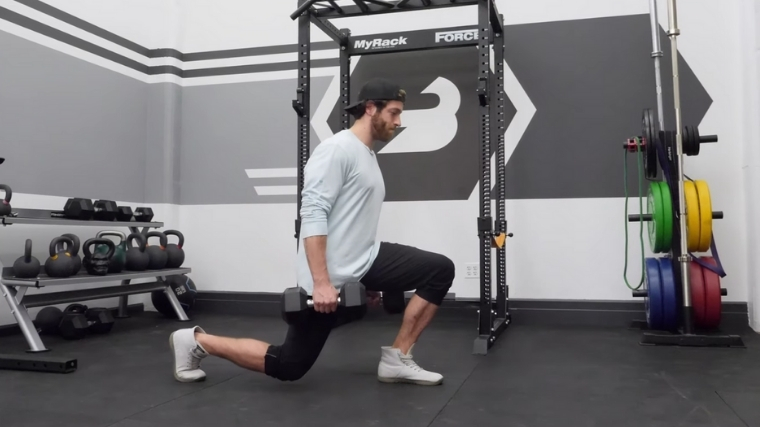
[Read More: 5 Lunge Benefits For More Muscle and Improved Movement]
Building up strength in the adductors will allow you to improve other movements that involve hip flexion and extension, such as other lunge variations, back squats, and deadlifts.
Quads
Alongside training muscles around the hip joint, the lunge heavily involves the knee joint, which puts a lot of tension on the quad muscles and makes the lunge a fantastic quad exercise. The further forward your knee goes in front of your toe when you do the lunge (which is perfectly safe), the more quads you’ll engage.
Common Lunge Mistakes
In addition to requiring heaps of balance and postural control, you also have to worry about solid posture and contracting the right muscles when you lunge. There’s a lot to pay attention to — keep these common lunge mistakes in mind before you undertake the lunge for yourself.
Stepping Too Narrow
You want to march (or, realistically, lunge) in a straight line. However, you can mess with your balance if your pathing is too tight. Walking on a “tightrope” puts your base of support too narrow, and you’re liable to stumble or tumble between reps. As such, you don’t want to step inward at any point. Your feet should land directly in front of your pelvis, or even slightly out to the side.
Torso Collapse
Changing your torso angle might make it easier to feel your glutes or quads working during the lunge. However, you don’t want to have a loose or unstable torso. When you lunge, make sure to maintain a rigid and mostly-upright torso.
Using Your Back Leg
One of the cardinal sins of lunge technique is leaning too much on your non-working leg. When you lunge, the vast majority of your own weight should be on your front leg.
[Read More: Stop Making These 4 Common Lunge Mistakes (Plus How to Fix Them!)]
That’s also the foot that you should push off from to begin your next step. Your back leg is basically a kickstand that keeps you from falling over. There’s little muscular tension on it, so don’t use it as a crutch to “push” you into your next rep.
FAQs
Lunges are a safe and effective way to build muscle and strength in the lower body. The lunge exercise requires a certain level of skill to ensure maximal benefit. All around, lunges are a safe and effective way to train the lower body.
It’s not really a matter of should they. Mechanically speaking, they just will. Depending on the specific variation of the lunge you are performing, you may be more likely to end up with your knee past your toes when at the bottom of the rep. If you have had knee injuries in the past, or have pain during this exercise, choose a lunge variation that does not make your knee travel past your toes.
The lunge is an exercise that places significant amounts of tension on the lower body, and therefore the muscles around the hip and knee. It is advised that you start with a low and manageable load and ascend the weight-used through your sets. Warming up will help you protect your joints and ensure you do not strain a muscle or irritate a joint.
Lunges are an exercise with an almost endless amount of possibilities. You can perform your lunges with dumbbells, kettlebells, barbells, or holding a sandbag or ball. If you are a beginner going from using bodyweight to using free weights, dumbbells or kettlebells may be the easiest place to start.
Absolutely. In fact, the lunge is one of the best exercises for beginners to conquer because it helps strengthen the lower body muscles while also building coordination and body awareness. True beginners should start with the basic forward or backward lunge to get started.
References
- Lee J, Kim J. Effects of an 8-week lunge exercise on an unstable support surface on lower-extremity muscle function and balance in middle-aged women. Phys Act Nutr. 2022 Dec;26(4):14-21. doi: 10.20463/pan.2022.0020. Epub 2022 Dec 31. PMID: 36775647; PMCID: PMC9925109.
Featured Image: Prostock-Studio / Shutterstock